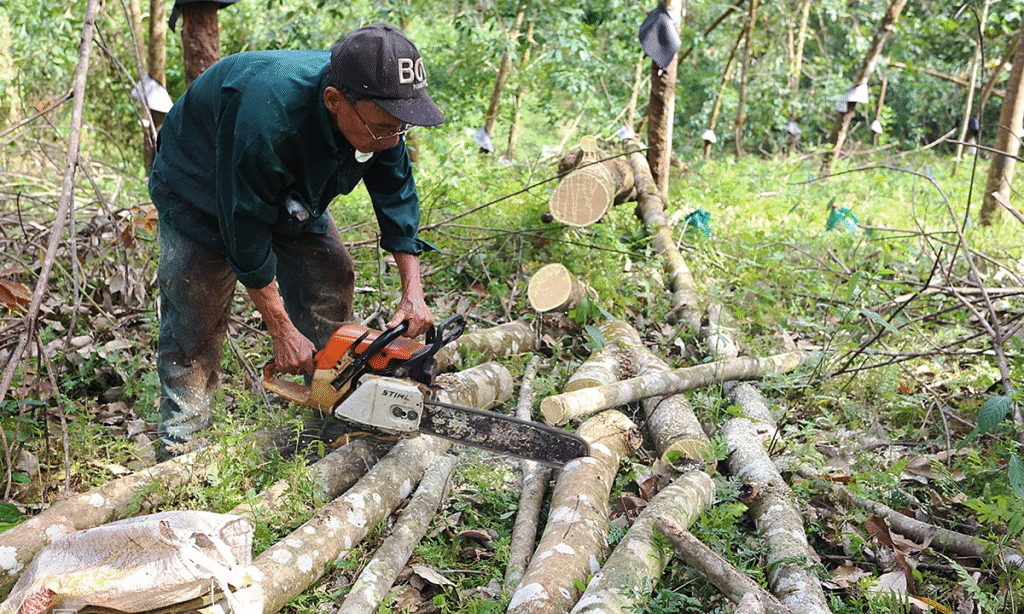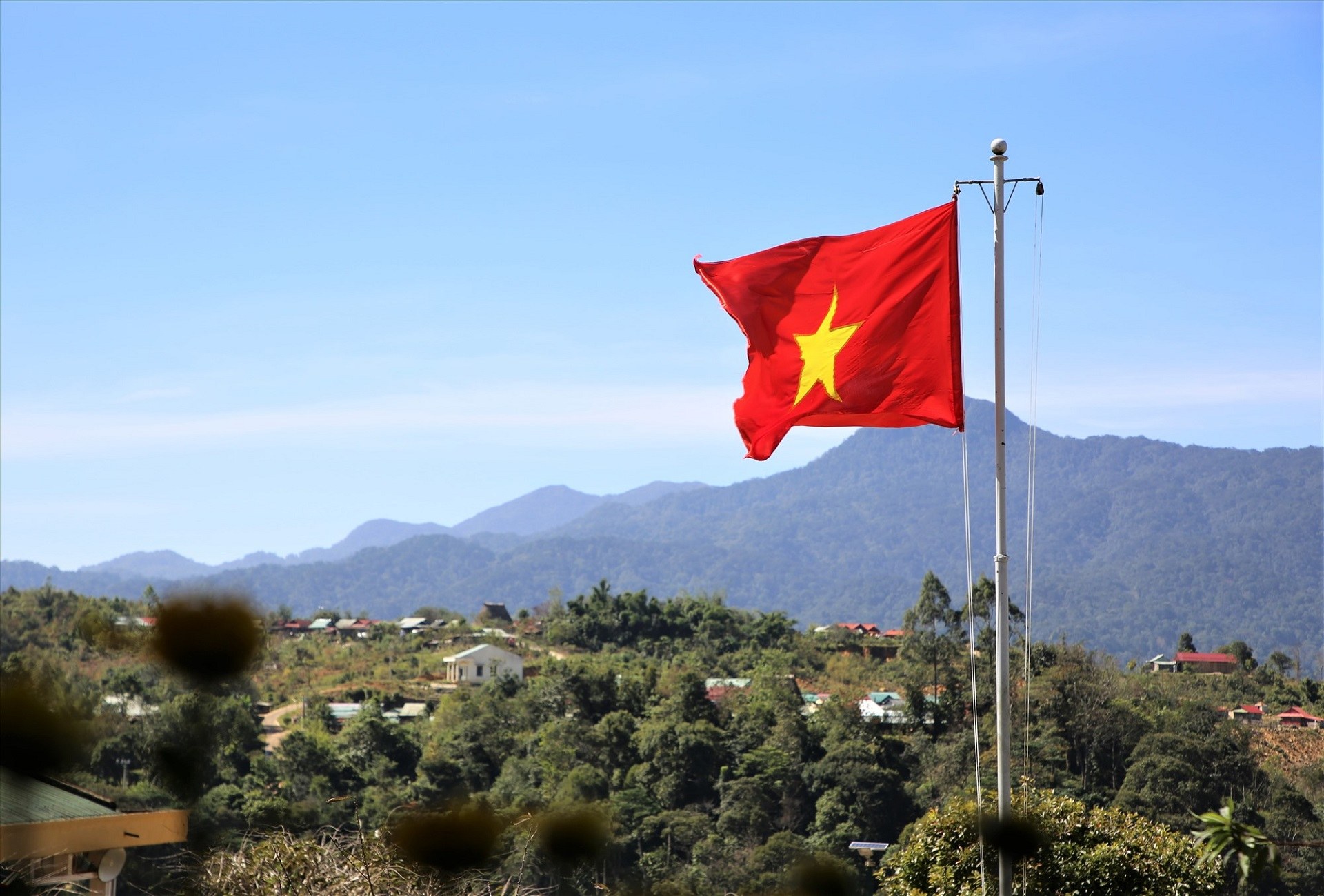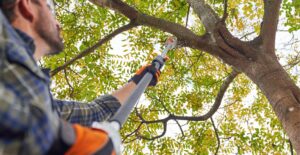Tree Removal in Vietnam: Laws, Permits, Applications & Costs
Vietnam’s lush landscapes are adorned with diverse tree species that contribute significantly to the country’s natural beauty and ecological balance. However, there are times when tree removal becomes necessary, whether for safety concerns, development projects, or disease management. If you’re considering tree removal in Vietnam, understanding the legal framework, permit requirements, application processes, and associated costs is essential to ensure compliance and avoid penalties.
Understanding Vietnam’s Tree Protection Laws
Vietnam places considerable emphasis on protecting its forest cover and urban greenery. The country has implemented stringent regulations governing tree removal to prevent indiscriminate cutting and preserve its natural resources. These laws are part of Vietnam’s broader environmental protection framework, which has evolved significantly over the past few decades.
The Law on Forestry (2017) serves as the primary legislation governing forest management and tree protection in Vietnam. This comprehensive law categorizes forests into three main types: special-use forests, protection forests, and production forests. Each category has specific regulations regarding tree removal, with special-use forests enjoying the highest level of protection.
In urban settings, additional regulations apply through the Urban Green Tree Management Regulations issued by various municipalities. These regulations typically require permits for removing trees on both public and private property, regardless of the tree’s size or age.
As a property owner or developer in Vietnam, you’re legally obligated to comply with these regulations. Non-compliance can result in hefty fines, criminal charges in severe cases, and mandatory reforestation requirements.
When Do You Need a Tree Removal Permit?
Understanding when a permit is required for tree removal in Vietnam can save you from legal complications. Generally, you’ll need a permit in the following scenarios:
When removing trees from forest land, regardless of the forest category or tree species. The application process and requirements may vary depending on whether the forest is classified as special-use, protection, or production forest.
For trees on urban public property, including street trees, park trees, and trees in public spaces. These trees are considered public assets and are strictly protected.
When removing trees on private property that exceed certain size thresholds. Many municipalities require permits for trees with a diameter at breast height (DBH) exceeding 20 centimeters.
For trees that belong to protected or endangered species, regardless of their location or size. Vietnam has a comprehensive list of protected tree species that cannot be removed without special authorization.
During development projects that necessitate clearing land with significant tree cover. In such cases, environmental impact assessments often include tree removal plans that require approval.
Even in cases where trees pose immediate safety hazards, it’s advisable to document the situation thoroughly before emergency removal and notify relevant authorities at the earliest opportunity.
The Permit Application Process
Navigating the permit application process for tree removal in Vietnam requires patience and attention to detail. While specific requirements may vary by location, the general process follows these steps:

Step 1: Initial Assessment and Documentation
Before submitting your application, you’ll need to conduct a thorough assessment of the trees you wish to remove. This typically includes:
Identifying the tree species and determining whether they belong to protected categories Measuring the tree’s dimensions, including height, trunk diameter, and crown spread Documenting the tree’s condition, especially if removal is being requested due to disease or safety concerns Photographing the tree from multiple angles to provide visual evidence Preparing a site plan that shows the tree’s location relative to buildings, roads, and other structures
This documentation serves as the foundation for your application and helps authorities evaluate the necessity and impact of the proposed removal.
Step 2: Completing the Application Form
The next step involves completing the official tree removal application form, available from the relevant forestry department or urban management authority. The application typically requires:
Your personal and contact information Property details and proof of ownership Specific information about each tree proposed for removal Reasons justifying the removal request Proposed plans for replacement planting, if applicable Any additional supporting documents, such as arborist reports or development approvals
It’s crucial to be thorough and honest in your application, as providing false information can lead to automatic rejection and potential legal consequences.
Step 3: Submission and Review
Once your application is complete, submit it to the appropriate authority, which may be:
The Provincial Department of Agriculture and Rural Development for trees in forested areas The Urban Management Department for trees in urban settings The local People’s Committee in some smaller municipalities
After submission, an inspection is typically scheduled to verify the information provided. Government officials will visit the site to assess the trees and determine whether removal is justified.
The review process can take anywhere from two weeks to several months, depending on the complexity of the request and the workload of the reviewing authority. For large-scale removals or those involving protected species, the process may include consultations with environmental agencies and public notifications.
Step 4: Decision and Conditions
If your application is approved, you’ll receive a permit specifying:
Which trees are approved for removal The timeframe within which removal must be completed Any conditions attached to the approval, such as replacement planting requirements Safety measures and waste disposal guidelines that must be followed during removal
It’s important to carefully review and comply with all conditions stated in the permit. Failure to do so can result in the permit being revoked and penalties being imposed.
If your application is denied, you’ll receive an explanation for the rejection. In many cases, you have the right to appeal the decision or modify your request to address the concerns raised.
Costs Associated with Tree Removal in Vietnam
The financial aspects of tree removal in Vietnam encompass various components, from permit fees to operational costs. Here’s a breakdown of the expenses you should anticipate:

Permit and Application Fees
Permit costs vary significantly based on location, tree type, and removal purpose. As of 2023, the basic application fee structure looks like this:
| Permit Type | Application Fee (VND) | Processing Time |
|---|---|---|
| Standard Urban Tree Removal | 200,000 – 500,000 | 15-30 days |
| Protected Species Removal | 1,000,000 – 3,000,000 | 30-60 days |
| Commercial Forest Harvesting | 5,000,000 – 15,000,000 | 45-90 days |
| Emergency Removal | 100,000 – 300,000 | 3-7 days |
Additional fees may apply for site inspections, especially in remote areas where travel costs are significant. For large-scale removals, environmental impact assessment fees can add several million VND to the total cost.
It’s worth noting that some municipalities offer fee waivers for removals necessitated by natural disasters or for trees posing immediate public safety risks. Check with your local authority to determine if you qualify for such exemptions.
Operational Costs
Beyond permit fees, the actual removal operation represents the most substantial cost. Factors influencing operational costs include:
Tree size and complexity: Larger trees require specialized equipment and more labor, significantly increasing costs. Location accessibility: Trees in difficult-to-access locations, such as those near power lines or in densely built areas, cost more to remove safely. Disposal requirements: Vietnam has specific regulations regarding the disposal of tree waste, with additional costs for transportation and processing.
For a medium-sized tree in an accessible location, professional removal services typically charge between 2,000,000 and 5,000,000 VND. Large trees or those requiring specialized equipment can cost upwards of 10,000,000 VND to remove safely.
Replacement and Mitigation Costs
Many tree removal permits in Vietnam come with conditions requiring replacement planting or other forms of environmental mitigation. These conditions can add significantly to the overall cost:
Replacement planting typically requires purchasing and planting new trees, often at a ratio higher than one-to-one. Depending on the species and size requirements, replacement trees can cost between 500,000 and 3,000,000 VND each.
Environmental mitigation fees may be levied for removals in ecologically sensitive areas. These fees contribute to conservation efforts and can range from 5,000,000 to 20,000,000 VND depending on the ecological value of the removed trees.
Maintenance guarantees for replacement plantings might be required, obligating you to ensure the survival of new trees for a specified period, typically 1-3 years.
For large development projects, comprehensive landscape restoration plans may be mandated, potentially adding tens of millions of VND to the project budget.
Special Considerations for Different Regions
Vietnam’s diverse geography and administrative structure mean that tree removal regulations can vary significantly across regions. Here are some region-specific considerations:
Northern Mountainous Regions
In provinces like Lao Cai, Ha Giang, and Cao Bang, where forest resources are vital for watershed protection and preventing erosion, tree removal regulations are particularly stringent. Local ethnic minority communities often have traditional rights to forest resources, which adds another layer of complexity to the permit process.
The Northern mountainous region’s Forest Protection and Development Fund provides financial support for reforestation efforts but also imposes stricter replacement requirements for approved removals. Working with local forest rangers is essential in these areas, as they have intimate knowledge of both official regulations and customary practices.
Coastal Regions
In coastal provinces such as Quang Ninh, Da Nang, and Khanh Hoa, additional regulations apply to trees that provide coastal protection. Mangroves and other coastal vegetation are heavily protected due to their role in preventing erosion and mitigating storm impacts.
The Ministry of Agriculture and Rural Development has designated certain coastal forest belts as special protection zones where tree removal is prohibited except in extraordinary circumstances. If your property falls within these zones, permit applications face heightened scrutiny and often require ministerial-level approval. You can verify if your property falls within these zones by consulting the coastal forest protection maps available on the Ministry’s website: http://www.mard.gov.vn.
Urban Centers
Major cities like Hanoi and Ho Chi Minh City have developed their own detailed urban tree management regulations. These cities maintain comprehensive tree inventories and have specific protection measures for heritage trees with historical or cultural significance.
In Hanoi, for instance, the Urban Tree Management Regulations (Decision No. 6901/QD-UBND) establish a special category for heritage trees that are over 50 years old or have particular cultural value. Removal of such trees requires approval from the city’s People’s Committee and typically involves public consultation.
Professional Services vs. DIY Approaches
While Vietnam’s regulations don’t explicitly prohibit property owners from removing trees themselves once permits are secured, there are compelling reasons to consider professional services:
Safety Considerations
Professional tree removal services employ trained personnel with specialized equipment designed to safely fell trees in complex environments. This is particularly important in Vietnam’s densely populated urban areas, where improper removal techniques can result in property damage or personal injury.
Professionals also have insurance coverage for potential damages, providing financial protection that individual property owners typically lack when attempting DIY removals.
Regulatory Compliance
Professional services are generally well-versed in local regulations and can help ensure that all aspects of the removal comply with permit conditions. This includes proper disposal of tree waste, which is strictly regulated in many Vietnamese municipalities to prevent the spread of pests and diseases.
Many permit authorities actually prefer or require that licensed professionals conduct the removal, particularly for larger trees or those in sensitive locations. Some permits explicitly specify that removal must be conducted by certified arborists or licensed forestry contractors.
Long-term Considerations
If your permit includes replacement planting requirements, professional services typically offer comprehensive packages that include not only removal but also replacement and initial maintenance. This integrated approach ensures that replacement trees have the best chance of survival, helping you meet your permit obligations.
Professionals can also provide valuable advice on selecting appropriate native species for replacement planting, contributing to local biodiversity while fulfilling regulatory requirements.

Future Trends in Vietnam’s Tree Removal Regulations
Vietnam’s approach to tree management and removal continues to evolve as the country balances development needs with environmental protection goals. Several emerging trends are worth noting:
Digitalization of the Permit Process
Many provinces are moving toward online permit application systems that streamline the process and improve transparency. The Vietnam Forest Administration has announced plans to integrate tree removal permits into its broader digital forestry management platform by 2026, potentially reducing processing times and administrative burdens.
Enhanced Focus on Urban Canopy
Vietnam’s rapid urbanization has heightened awareness of the importance of urban trees for quality of life and climate resilience. Major cities are developing comprehensive urban forest management plans that include stricter protection for existing trees and more ambitious replacement requirements when removals are unavoidable.
Climate Change Considerations
As Vietnam grapples with climate change impacts, tree removal regulations are increasingly incorporating carbon sequestration values into the evaluation process. Future permits may include carbon offset requirements or differential fees based on the carbon storage capacity of removed trees.
Conclusion
Navigating tree removal in Vietnam requires understanding a complex regulatory landscape that reflects the country’s commitment to environmental protection and sustainable development. By familiarizing yourself with the legal requirements, preparing thorough applications, budgeting appropriately for all associated costs, and considering professional assistance, you can ensure that necessary tree removals proceed smoothly while respecting Vietnam’s natural heritage.
Whether you’re a property owner, developer, or simply concerned about a hazardous tree, taking the time to understand and follow proper procedures not only helps you avoid legal complications but also contributes to Vietnam’s broader environmental goals. The effort invested in proper tree removal and replacement represents an investment in the country’s sustainable future.




